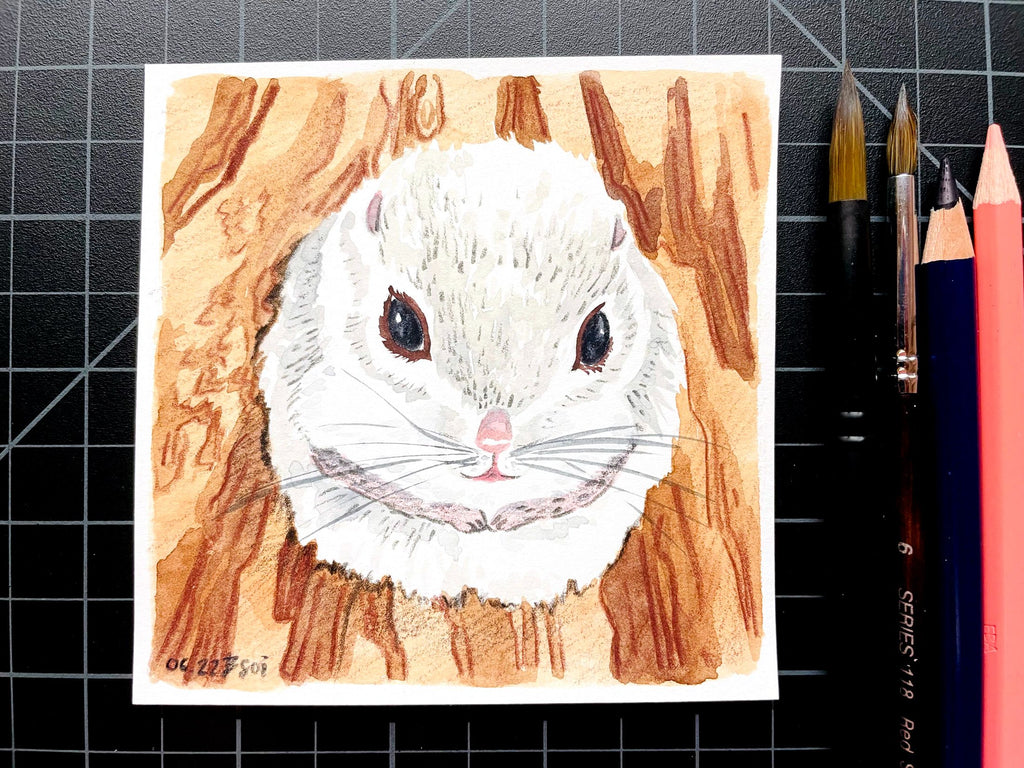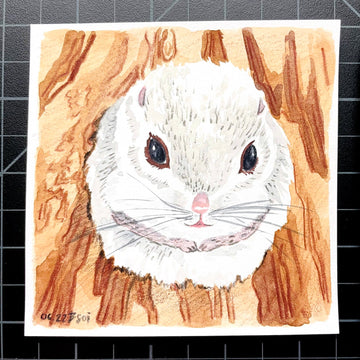A painting can be good by itself, but a good frame can make it great. In this blog, we’ll explore how a frame affects the look and feel of a painting. I’ll also include some common and not-so-common frames, so there should be something for everyone!
Portrait vs. Landscape
First things first – when I talk about “framing”, I’m not talking about adding an actual frame, like the kind used to help you hang art on walls. That’s a separate topic for later!
What I want to explore is how a frame’s shape alters the atmosphere of a painting, and how to best frame a painting to suit your subject.

The most common frame would be the rectangle, set in either portrait or landscape. Portrait rectangles, as its name suggests, are great for portraits, as they fit well around a person’s head and shoulders.
Other possible uses would be for subjects that are taller than they are wide, such as buildings and trees. And while you don’t always have to fit the entire subject within your frame, portrait frames give a narrower but more emotional feeling, like looking through a window and being able to see everything from the sky (uplifting and dreamy) to the ground (down-to-earth; grounded).

Landscape orientation is good for – you guessed it – landscapes! The wider view you get is much more comfortable for your eyes since we naturally see with a wider view.
This is why movies are filmed in the landscape too, because if they were in portrait, then we’d constantly have to move our eyes (or head) up and down to see everything. Therefore, landscape framing will have a more calming, easy-going effect on a painting.
Bonus tip: A variation of this would be the panoramic framing, where you can capture a wide-angle view, or a very wide landscape. This would cause your painting to take on a “vast” kind of feeling, and the wider the frame is, the more your painting will feel like it’s never-ending.
Fair and Square

Another relatively common frame is the square frame. While it’s not as popular as the rectangle since it often feels too symmetrical, a square frame can give that feeling of regularity or perfection.
In any case, a square frame allows you to easily centre the subject you have, so the viewer can focus straight away on the important areas of your painting.
Circles and Ovals

A little less common will be the circle and oval, if only because they require special tools to draw and/or make.
A circular frame is similar to the square frame, but because it’s round, it comes off as being much “softer” in feeling than a square.
It also resembles looking through a telescope or microscope, so it gives a more inquisitive and searching atmosphere compared to a rectangular or square frame.

As for the oval frame, this is even less common than the circle, as it’s harder to put into practice. However, when it’s used, it gives a more antique or reflective atmosphere, since its shape resembles an old mirror. It can also lean into the “posher” or more “elegant” side!
There’s also a difference between the portrait and landscape orientation of the oval. The portrait one, like the portrait rectangle, is very similar to the shape of a person’s head, which is why it feels so familiar and suitable as a shape for a mirror. The landscape orientation is rarer, as it gives a more “bloated” feeling.
It’s still good for landscapes though, or any subject that requires a wider angle or perspective, kind of like looking through fisheye lenses.
Breaking the Boundaries

Last but not least, you have other polygons to consider. Not all shapes have to be regular, either – how about setting your subject against a random pentagonal shape? They’ll give a more “uncut gem” kind of feeling as long as they have five or more sides.
On the flipside, triangles give a sharper feeling, since they have three pointy corners. They also resemble arrows, so can tend to point people’s attention in a certain direction.
In any case, whatever frame you decide to use, try taking some time to explore the different possibilities, and see how changing one will affect your painting. You can even break the borders of your frame, so don’t feel like you’re confined to paint within your shape!
So next time you paint, do consider what kind of frame to use. But most importantly, make sure to have some fun doing so!
What’s your favourite frame shape to use? Have you ever thought about how a frame can affect the atmosphere of your painting? Let us know in the comments below!
Also, if you’re interested in learning more about the creative process, feel free to subscribe to our email newsletter. Whether you’re experimenting or want to dive deeper into the art world, we’ll notify you of all the latest happenings with Etchr!



1 comment
I love the idea of circular, oval or even random shaped backgrounds and realized I’d been limiting my approach to rectangles, with the only considerations being horizontal or vertical. This was based mostly on financial considerations—inexpensive frames for display. My brain feels like a whole new set of connectors has been liberated! Thank you for your products and your articles.